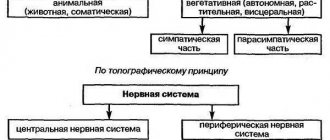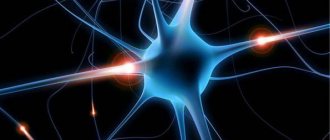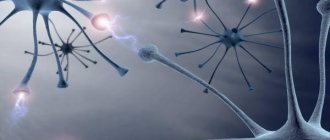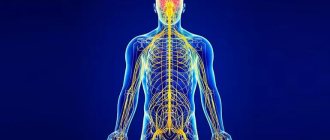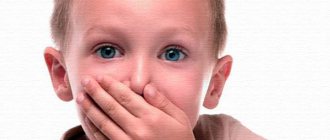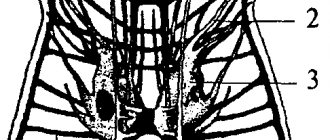Substance abuse among adolescents is a serious problem for modern society, although there is an opinion that this phenomenon is much less dangerous than drug addiction. But due to its destructive effect on the body of children and adolescents, the availability of toxic substances used, and the speed of development of mental dependence, this disease poses a serious threat.
It is not customary among narcologists to divide patients into substance abusers and drug addicts: both diseases develop according to similar principles and are subject to serious professional treatment. The only difference is in the drugs used - drug addicts take non-narcotic chemicals.
Causes of substance abuse in children and adults
It is impossible to guarantee that one personality type is not susceptible to toxic addiction, while another will sooner or later get hooked, but certain traits and life circumstances can bring a child or adult closer to using substances. Thus, most children who are drug addicts grow up in dysfunctional/single-parent families or orphanages, are surrounded by conflicts, feel misunderstanding and lack of love and care on the part of their parents (or excessive control and prohibitions), and are outcasts in normal society. When a teenager has no friends among his classmates, he strives to infiltrate a company where he will find like-minded people with whom he will be connected by common experiences. And a company in which toxic substances are used in order to achieve a “high” will give the teenager the feeling that he is special, that he has comprehended something greater and mysterious and is more mature than his peers. A big role here is played by the simple curiosity of a teenager who wants to try everything, while due to lack of information the child may not understand what he has gotten himself into. Even when understanding comes in the early stages, after the first attempt to use, the teenager is very afraid of being branded a “weak” and a coward. At this age, the main priority is usually society and a place in it, and if it was not possible to win a significant place in the class, the child will try to win it in other circles.
Often parents themselves do not understand that they are driving their child into a corner. With the help of substance use, he tries to “forget himself”, to escape into his own world from constant screams or beatings, reproaches and quarrels, to find there that bliss that his too strict and alienated mother could not give with hugs and words, to prove to the tyrant parent that his rules and the constant demands could not “break” him and make him a good boy/girl.
Infantile individuals, with a weak will and life position, who do not know how to organize their leisure time, are more prone to substance abuse. The causes of adult substance abuse are similar: various kinds of problems, be it personal life, relationships with others, lack of acceptance in society. These are also depression, grief, low social status, low education and financial status, lack of interest in real life, craving for easy ways to get pleasure, hedonism as a credo.
People with serious illnesses who experience constant pain also resort to substance abuse, since large doses of toxic substances provide temporary but very effective pain relief. The pain returns again and the person driven into the “system” uses the substance again and again in order to achieve the desired state.
Where to go to get help?
Therapy is carried out:
- in drug treatment clinics at the place of residence;
- in licensed private clinics.
The difference between free and paid centers is not only a material issue. Patients of commercial clinics have the opportunity to undergo treatment in an anonymous format. Personal data will not leave the clinic, and if the patient needs a certificate from a narcologist, he can easily get it to get a driver’s license, get a job, etc.
The second difference is the degree of comfort . Commercial centers provide more services:
- cozy rooms;
- transfer to the clinic;
- Doctors visiting your home for intervention, planned or emergency care.
Finally, patients do not have to sit in long, tiring queues or face indelicate, rude attitude from doctors and staff. These factors are important for a person who suffers from addiction : if he experiences discomfort when going to the doctor, this will become stress for him, pushing him to the habit. And having encountered unpleasant emotions during a visit to a narcologist, he is unlikely to want to see a doctor again.
The clinic “Private Medic 24” employs experienced doctors who have helped many people cope with addictive conditions.
You can find out about reviews, methods, forecasts and prices at a consultation . You can call the number 24/7, without breaks or weekends.
Types and types of substance abuse
There are two main groups of substance abuse, depending on the substances taken:
- Substance abuse with household chemicals, industrial substances, alkanes. In turn, it is divided into the following types:
- Glue addiction: a bag coated with a certain type of glue is placed on the head and the vapors are inhaled. There is lightness and joy, euphoria, coordination of movements is impaired, speech becomes blurred, and after the effect of the glue wears off, despondency, apathy, headache and nausea sets in.
- Gasoline addiction: xylene, toluene, benzene cause severe intoxication and a feeling of euphoria. They are inhaled through a dampened cloth for several minutes. The airways become irritated, gait becomes unsteady, and hallucinations and delusions often occur.
- Acetone toxicity: inhaled vapors quickly cause disorientation, euphoria and hallucinations, and stupor. During this state, the drug addict is detached from the world, usually sitting with half-closed eyes and a slight smile and lack of reaction to the outside world. After a few hours, irritability, lethargy, nausea and vomiting, and apathy set in.
- Substance abuse with nitro paint solvents: toluene is inhaled, impaired consciousness occurs. Excitement and ecstasy appear, which quickly give way to aggression. When large doses are inhaled, lightness and joy are felt, hearing and vision become sharper, and the surrounding reality begins to be perceived as bright and airy, like in a fairy tale. Afterwards comes the “withdrawal” in the form of a headache, hatred of the world and people, nausea and vomiting, and dizziness.
- Some classify the use of drugs as substance abuse: central nervous system stimulants, tranquilizers, antipsychotics, sleeping pills, anticholinergics. Symptoms vary, but the overall picture is similar: a feeling of euphoria and intoxication, hallucinations, followed by melancholy, irritability, sweating, etc.
Usually, substance abuse refers to the first group.
What kind of disease is this?
From a medical point of view drug addiction and substance abuse , as clinical diseases with features of therapy and rehabilitation, are not much different from each other.
Although in legal or social consideration these concepts do not coincide, they are distinguished by criteria that clarify the difference between drugs and other drugs that affect the human nervous system, describing the mass coverage and social (personal) danger for different age groups and segments of society. The definition of substance abuse is based on several components:
- abuse of a number of toxic substances:
- substances (medicinal and non-medicinal) do not belong to the list of narcotic drugs and have a diverse nature - they are biological, chemical, plant;
- Accustoming to the substances used occurs and a dependence on them is formed (painful addiction).
Consequences of substance abuse for the body
Substance abuse causes enormous harm to both the human body and his social status, status, and psychological state. Some substances develop not only psychological, but also physical dependence. A substance abuser experiences:
- chronic intoxication and, as a consequence, toxic encephalopathy, which manifests itself in the form of mental disorders, impaired muscle tone, hypothalamic syndrome, decreased or disabled reflexes, convulsions, epilepsy, drowsiness,
- a variety of diseases of the nervous system, neurasthenia, nervous tics, multiple sclerosis, nerve atrophy,
- severe depression,
- insomnia,
- respiratory tract burns,
- lung cancer, pulmonary hemorrhage, lung abscess, degeneration of lung tissue,
- cirrhosis of the liver,
- degeneration of organ structure,
- kidney tumors, in severe cases – renal failure,
- heart disease, incl. acquired heart disease, hypertension, heart attacks,
- inflammation of the mucous membranes of the gastrointestinal tract,
- delirium is a severe mental disorder that is accompanied by impaired consciousness and hallucinations,
- organic brain lesions,
- dementia.
Many of the listed consequences of substance abuse are irreversible.
Addicts develop withdrawal syndrome, as with alcoholism and drug addiction. Muscles begin to twitch, depression, apathy and internal aggression arise, hatred of everything around you and a strong desire to go back into the world of bright colors. Muscles ache, anxiety and suicidal tendencies set in. The mental state is very unstable. Typically, such “withdrawal” lasts up to a week, then, if the substance is not used, the symptoms gradually fade away, but anger and various mental manifestations remain for a long time.
A drug addict's mental activity quickly declines and he completely drops out of the society in which he lives, with the only exception being “high friends.” Ethics and kindness disappear, and one becomes indifferent to one’s position in a particular social structure.
In case of glue addiction, in a state of intoxication and dope, the drug addict cannot always remove the bag, so death from suffocation in this case is not uncommon. Substance abuse often leads to coma and death from overdose.
ICD-10 code
The disease classifier provides for the place of substance abuse in sections with codes F10-F19 , which include a variety of mental disorders and behavioral disorders associated with the use of psychoactive substances.
The specificity of such a wide range of subsections is provided due to a number of characteristics that describe (identify) a specific disorder:
- characteristics of the substance taken;
- clinical characteristics of the patient’s condition (harm to health, type of addiction, existence of other disorders).
Video:
Signs and symptoms of substance abuse
The following signs indicate a drug addict who has consumed a toxic substance:
- profuse salivation,
- dilated pupils,
- dry cough,
- tears from the eyes,
- weak reaction to the outside world,
- distracted attention,
- causeless laughter
- slurred speech
- impaired coordination of movements.
Some time after inhaling toxic fumes, a drug addict develops:
- nausea,
- vomit,
- Strong headache,
- thirst,
- irritability,
- depression.
A common symptom after the effect of a toxic substance has ended is an echo in the head from all external sounds.
Signs of substance abuse include an irresistible desire for a person to try the drug again, inhale the vapors and experience “happiness,” increasing dosage and withdrawal symptoms.
By these signs you can recognize a substance abuser:
- dilated pupils,
- sunken, red eyes,
- irritability,
- loss of interest in everything around you,
- decreased mental activity,
- hand tremors,
- trembling of the eyelids and mouth,
- bronchitis,
- swelling (mainly eyelids and limbs),
- chronic runny nose,
- strong aggression and anger, unwillingness to listen to anyone, self-absorption,
- muscle twitching,
- inappropriate behavior
- smell of acetone or other chemical odor from the mouth,
- hyperemia of the skin,
- insomnia,
- visible weakness
- pallor or even a greenish tint to the face.
Basic addiction treatment methods
You can get rid of substance abuse by contacting a specialized addiction clinic. Until the strong craving for toxic substances is relieved, the patient must remain in the hospital all the time. This will prevent a breakdown and return to illness.
Substance abuse therapy is very similar to drug addiction treatment. The approach to combating these addictions is almost the same. It involves the following stages:
- Detoxification and withdrawal symptoms relief
- Restoring normal functioning of internal organs
- Psychotherapy
- Rehabilitation
Options for preventive work with substance abusers
Preventive work can be carried out with different groups of patients. It happens:
- primary;
- secondary;
- tertiary
In the first case, we are talking about the interaction of psychologists with people who have never tried to “get high.” A specialist comes to the group and gives lectures about the consequences of substance abuse, its dangers to health, and the diseases caused by this addiction. He can show videos to the public to support his words. Former substance abusers who “went through all the circles of hell” but were able to recover are often invited to such meetings.
Secondary prevention is carried out if a person already knows first-hand what a substance abuse high is. We are talking about people who have suffered from addiction for a long time and are now undergoing treatment for it. It is important to support them so that they do not relapse, in order to prevent a relapse. During the sessions, the psychologist makes sure whether the patient has characteristic signs of substance abuse and whether he has returned to stimulants. At the same time, he finds out whether he has difficulties adapting to the changed lifestyle. If necessary, performs relaxation exercises.
Tertiary prevention is spoken of when a person has undergone treatment a long time ago. The main goal here is to prevent relapse. It is not for nothing that they say that former drug addicts do not exist. Any person who has overcome the craving for illegal substances remains at risk. As soon as he inhales the usual composition again, he again begins to experience an irresistible desire to get high.
Bibliography:
- Mandel Boris Ruvimovich. Psychology of addictions (addictology) / Publisher: INFRA-M / Year of publication: 2021, 334 p.
- Bezhentsev Alexander Anatolyevich. Crime Prevention System / Publisher: Flinta / Year of publication: 2012 / Number of pages: 296
- Kosaretskaya Snezhanna Vyacheslavovna, Kosaretsky Sergey Gennadievich, Sinyagina Natalya Yurievna. Informal youth associations: prevention of antisocial behavior / Publisher: KARO / Year of publication: 2006 / Number of pages: 448
- Rozhkov Mikhail Iosifovich, Kovalchuk Marina Aleksandrovna. Prevention of drug addiction in adolescents / Publisher: VLADOS / Year of publication: 2021 / Number of pages: 144
- Basov Nikolay Fedorovich. Social work with youth / Publisher: Dashkov i K / Year of publication: 2015 / Number of pages: 328
